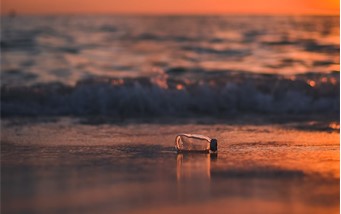Capturing Plastic in the Ocean
One of the most significant pressures bearing down on the world now is pollution. It’s felt worldwide, regardless if residents are living further inland. But for those who reside near shorelines, 4ocean reviews that the reality of just how frightening pollution is hits close to home.
According to the World Economic Forum, there are an estimated 75 to 199 million tons of plastic littering the ocean. Though some can be seen with the human eye, what’s even scarier is the concentrated amount of microplastics (which have been broken down through years of natural erosion, though they never really disappear) in ocean water.
The pollution in water is vast, and seemingly impossible to remedy entirely. However, strong efforts are being made, both in technological advances and the will of environmentally conscious organizations, to clean our oceans.
Microplastics
Some plastics in the ocean are as small as the size of a sesame seed and smaller. These small plastic pieces are known as microplastics.
They integrate with sand and water and are completely unseen by the human eye. Yearly, the average person will eat, drink, and even breathe between 78,000 to 211,000 microplastics, but this can range depending on how frequently they visit locations like oceans.
Marine animals are among the most frequent victims of microplastics. Their toxic makeup can wreak havoc on the digestive systems of ocean life.
In terms of solutions, various strides have been made to try and collect these microscopic pollutants- the most notable being a magnetic powder developed in Australia. Once in the water, it attracts and traps plastics and other pollutants.
The powder itself is formed via recyclable materials, making it a sustainable object of its own nature. This could aid water treatment plants, where on-site filters fail in properly filtering out microplastics on their own accord.
Larger Plastics
Plastics such as bottles, cans, and the like pose another issue. Thankfully, anyone can do their part in keeping these pollutants out of the water by cleaning up after a day on the beach, switching to using biodegradable materials when near the ocean, and through general mindfulness.
4ocean is a non-profit cleanup organization that works to collect ocean plastics nearer to the surface of the ocean by using a large, net-like system that collects pollutants to later be sorted for recycling. Recently, 4ocean has pulled over 27 million pounds of trash pollution from the world’s oceans, rivers, and coastlines.
The Ocean Floor
One of the toughest areas to clean is the ocean floor. Unfortunately, technology has not yet allowed an affordable way for drones or other systems to reach the pollution that’s out of reach- including intact plastics as well as microplastics.
The truth is this: without immense and steadfast intercession by people everywhere, solutions to pollution won’t be able to keep up with the unprecedented rates of how quickly it’s piling up. However, through a mixture of human discipline and technological advances, clean oceans can be the future.


